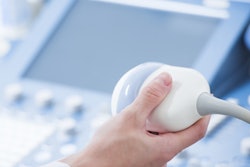Dear Ultrasound Insider,
Telemedicine has emerged as a necessity since the onset of the COVID-19 pandemic, and radiologists are playing an important role through the use of point-of-care ultrasound (POCUS) and other imaging systems. From the jungles of Peru to the snowy Himalayas, reaching out to areas without easy access to ultrasound has been in focus for some researchers.
A team from the University of Rochester recently touted its protocol for enabling minimally trained personnel in the field to acquire diagnostic-quality images that can be sent over low-bandwidth connections for interpretation by experts. Discover how it performed in a pilot program in Peru in this edition's Insider Exclusive.
In related news, POCUS reached new heights in diagnosing high-altitude sickness experienced by a Swiss climber trekking Mount Everest. Find out how this emerging technology helped out at over 14,000 feet.
Also, placing arterial lines under the guidance of POCUS outperformed traditional landmark guidance in research presented at the virtual 2021 American Institute of Ultrasound in Medicine annual meeting. Read about how well it performed, as well as what benefits it has over traditional guidance.
In other ultrasound news, a team of researchers from Yale University and the University of Massachusetts found that combining ultrasound with digital breast tomosynthesis has been shown to decrease recall rates. Take a look at our coverage to learn how and why.
Plus, check out the following recent ultrasound stories:
- Researchers from New York University trained their artificial intelligence system to detect and diagnose cancer on breast ultrasound with accuracy comparable to that of radiologists.
- Researchers found that hysterosalpingo contrast sonography is potentially safer and more efficient in examining fallopian tubes in women undergoing infertility exams.
- The COVID-19 pandemic has drastically affected utilization of ultrasound exams performed by radiologists in the emergency department.
- New research touted contrast-enhanced ultrasound for having several useful benefits over other forms of medical imaging, such as better efficiency, better imaging, fewer side effects, and no exposure to ionizing radiation for patients.
Find more articles like these by regularly visiting your Ultrasound Community!



















